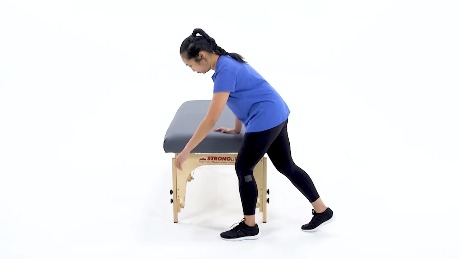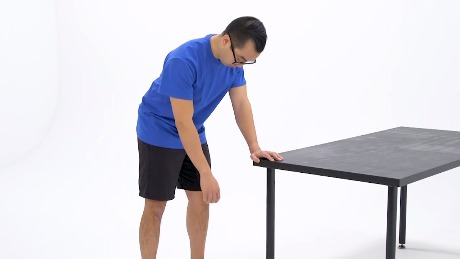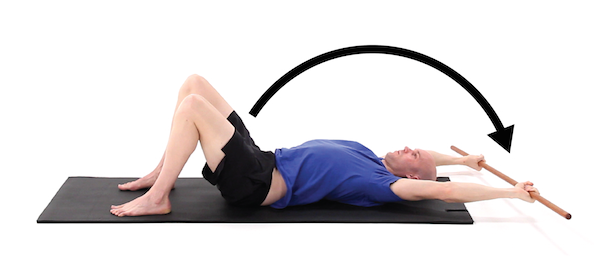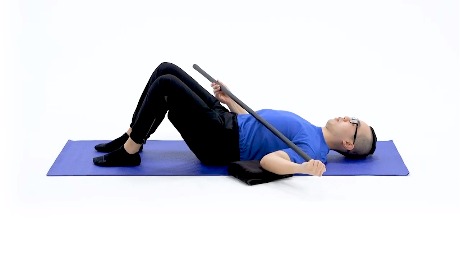Can Physical Therapy Help Frozen Shoulder? Potential Causes and Treatment

Licensed Physical Therapist, PT, DPT // Director of Marketing and Sales // Certified Dry Needling Specialist // EW Motion Therapy Homewood
Our shoulders are an essential part of our daily movement. They connect our arms to our torso and help them stay in place, whether we do push-ups or reach for a cup on a high shelf. So when one of our shoulders begins to feel stiff and is not functioning correctly, it can be frustrating when we have to limit our movement. How can you ensure your shoulder functions properly again?
If your shoulder does begin to feel stiff for no apparent reason, you may be experiencing adhesive capsulitis, more commonly known as frozen shoulder. You have a few treatment options, one of them being physical therapy. Our therapists at EW Motion Therapy work with frozen shoulders often and can develop an individualized treatment plan for you to return to your favorite activities as soon as possible. Even if you choose physical therapy elsewhere, we still want to present it as a treatment option for frozen shoulder.
This article discusses what a frozen shoulder is, potential causes of the condition, how physical therapy can help, and some other things you can do at home. With this information, you can get the treatment you need and hopefully go back to doing your favorite activities.
Curious about how physical therapy could help you? Click the button below to download our answers to 20 frequently asked questions.
What is frozen shoulder?
Frozen shoulder occurs when adhesions (thickened tissue) form in the shoulder, limiting your active and passive range of motion and causing stiffness and pain. You have a primary frozen shoulder when the adhesions come on with no apparent cause, and you have a secondary frozen shoulder if the condition results from an injury or immobilization.
Frozen shoulder progresses in three stages. In the first freezing stage, you lose range of motion and have more pain, especially at night. In the frozen second stage, your pain may start to fade, but your stiffness will likely remain or worsen. In the final thawing stage, you will probably regain some of your less painful range of motion, and your shoulder will start to feel normal again.
What can cause a frozen shoulder?
Among the medical community, frozen shoulder is somewhat of an anomaly. No one has quite figured out what causes it, especially in the primary causes. But some factors could put you at a higher risk for the condition. If you have diabetes, thyroid disease, Parkinson’s disease, cardiac disease, or a hormonal imbalance, your risk of developing a frozen shoulder increases by 10-38%.
Frozen shoulder affects 2 to 5% of the population, most commonly women between 40 and 60 years old. The condition can last anywhere from 6 months to 2 years, depending on the stage at which you seek treatment.
How can physical therapy help?
When you come to physical therapy for your frozen shoulder, your therapist can help determine which stage you are in, whether you are freezing, frozen, or thawing. Depending on your stage, they will tailor a treatment plan to help you maintain your range of motion. In the early stages, they will focus on preserving the range of motion you have while helping to manage your pain. This can involve gentle stretching, manual therapy, and other modalities to help with your range of motion. In later stages, your therapist will help you regain the range of motion you lost, helping you stretch as you work your way up to strength training.
Your therapist will also assign some exercises for you to do at home. Here are a few examples our therapists have given for a frozen shoulder.
Flexion-Extension Shoulder Pendulum with Table Support: Begin in a standing position with your trunk bent forward, one arm resting on a table for support, and your other arm hanging toward the ground. Slowly shift your body weight forward and backward, letting your hanging arm swing in those directions. Make sure the movement comes from your body shifting, and do not use your arm muscles to create the back-and-forth motions.

Circular Shoulder Pendulum with Table Support: Begin in a standing position with your trunk bent forward, one arm resting on a table for support, and your other arm hanging toward the ground. Slowly shift your body weight in a circular motion, letting your hanging arm swing in a circle at the same time. Make sure the movement comes from your body shifting, and do not use your arm muscles to create the circular motion.

Supine Shoulder Flexion with Dowel: Begin lying on your back with your knees bent and both hands holding a dowel rod. Keeping your elbows straight, lift your arms straight up overhead as far as is comfortably possible. Make sure to keep your shoulders in contact with the floor, and do not let your back arch during the exercise.

Supine Shoulder External Rotation with Dowel: Begin lying on your back, holding a dowel in both hands with your affected arm bent at 90 degrees and your elbow tucked by your side. Using your other arm and dowel to guide the movement, slowly rotate your forearm outward, keeping your elbow tucked. Bring it back to the starting position and repeat. Keep your elbow bent and resting on the floor throughout the movement. Try not to arch your back as you move your arm.

What else can I do at home?
Now you know more about how physical therapy can help the symptoms of a frozen shoulder. Along with doing your home exercises regularly, you can try some simple range of motion exercises and isometrics at home, as well as putting ice and heat on your shoulder to help your muscles relax.
With so many essential movements relying on your shoulder, it can be limiting when one of them is not functioning correctly. It is vital to seek treatment as soon as possible to maintain your range of motion and manage pain. Physical therapy can be an excellent treatment option for your shoulder - our physical therapists at EW Motion Therapy work with frozen shoulders often and can create a customized plan for your needs. If you are interested in working with us, answer the questions in our Program Match Tool to find the program that best fits your needs.
Reference: Phansopkar, P., & Qureshi, M. I. (2022). A Review on Current Notion in Frozen Shoulder: A Mystery Shoulder. Cureus, 14(9), e29362. https://doi.org/10.7759/cureus.29362


